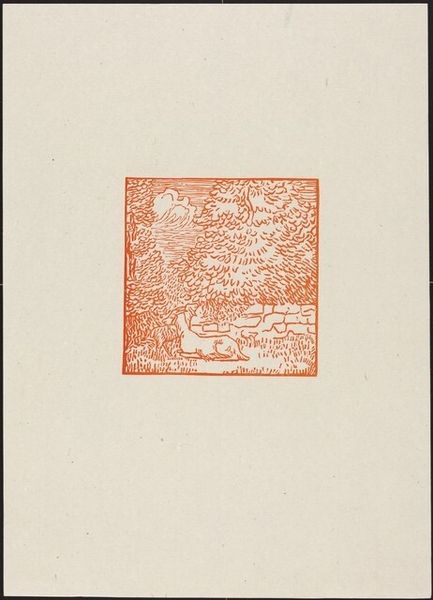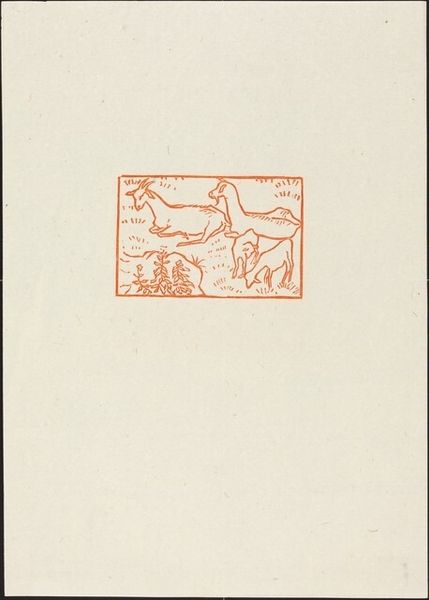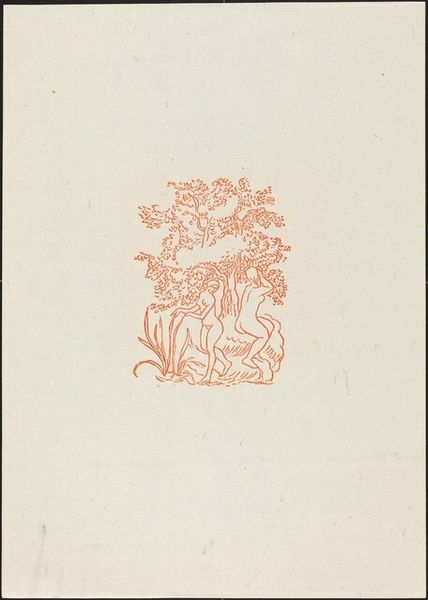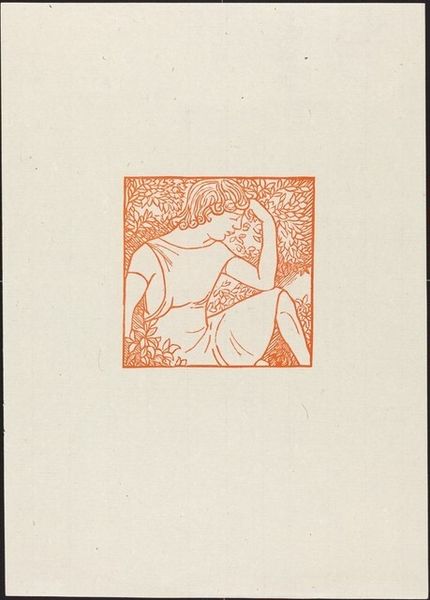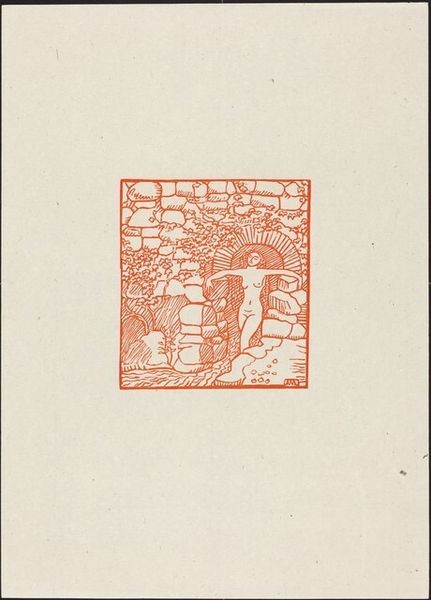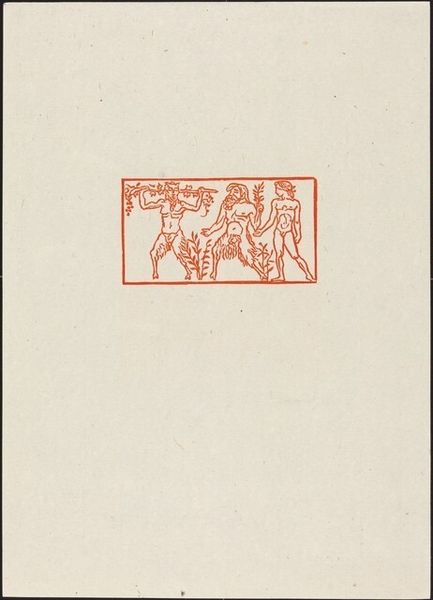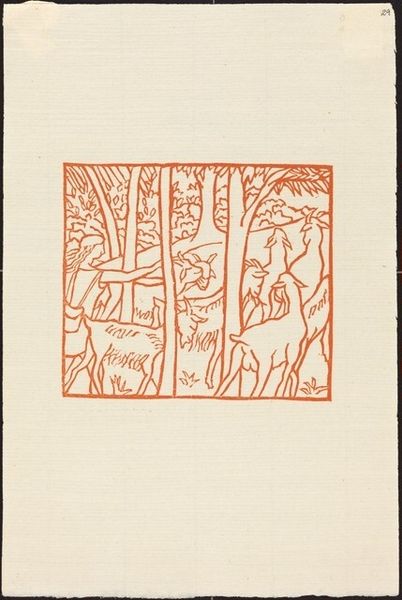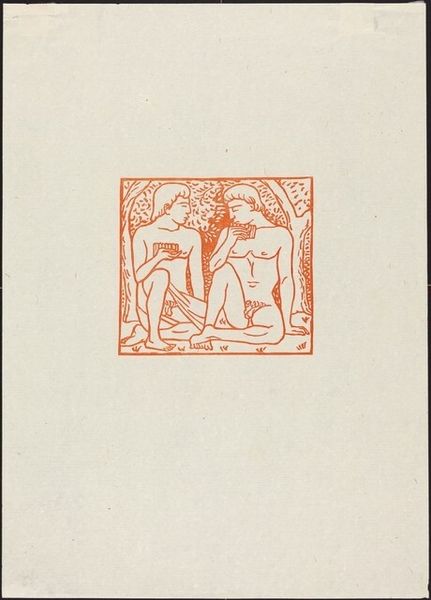
Sixth Eclogue: Forests Begin to Rise Up (Arbes dans la montagne) Possibly 1926
0:00
0:00
print, linocut, woodblock-print
# print
#
linocut
#
landscape
#
linocut print
#
woodblock-print
#
geometric
Copyright: National Gallery of Art: CC0 1.0
Curator: We're looking at "Sixth Eclogue: Forests Begin to Rise Up," a linocut print, possibly from 1926, by Aristide Maillol. Editor: Immediately, the starkness grabs me. That single color against the paper creates a very direct, almost raw feeling. You can really see the hand of the artist in the texture. Curator: Indeed. Maillol, known primarily for his sculpture, demonstrates a real understanding of the medium here. Linocut allowed for bolder lines, which, considering his broader work, could symbolize strength but also, potentially, rigidity. Editor: There's an interesting tension. The subject is organic – trees, a mountain – yet the execution is geometric. I see that reflected in the labor: careful carving away, the imprint left, mass production, yet also inherently handmade in each instance. Curator: It invites a discussion around man's role in defining and interacting with nature. The "rising up" forest can be seen as a force—possibly rebellious. Post-World War One, artists like Maillol were grappling with trauma and how societies reconcile their histories with the future. Editor: And that single block of color further flattens it—all those textures almost homogenized, making us aware of the limits, what can be mass-produced. Does it echo those pre-war utopias gone sour after 1918? Curator: Possibly. It is important to remember that these idyllic settings often obscure real, very strenuous agricultural work. As we examine this piece, we see it speaks to how society idealizes certain kinds of labor and makes invisible others. Editor: Looking closely, one becomes aware of the skill behind his craft: thinking in negative space. The act of removal. This piece almost presents itself as a site, then, where what's omitted becomes the statement. Curator: Absolutely. The simplicity can be deceptive. The work encourages one to pause and confront notions of landscape and production that affect us even now. Editor: It also brings attention to the socio-economic conditions: it becomes not just about a forest rising up but also whose labor makes up this landscape. Curator: Well, it offers much to consider, both for art historians and for a public grappling with contemporary societal matters. Editor: Precisely; a print that invites an awareness about where it came from and what the scene depicted really consists of.
Comments
No comments
Be the first to comment and join the conversation on the ultimate creative platform.
